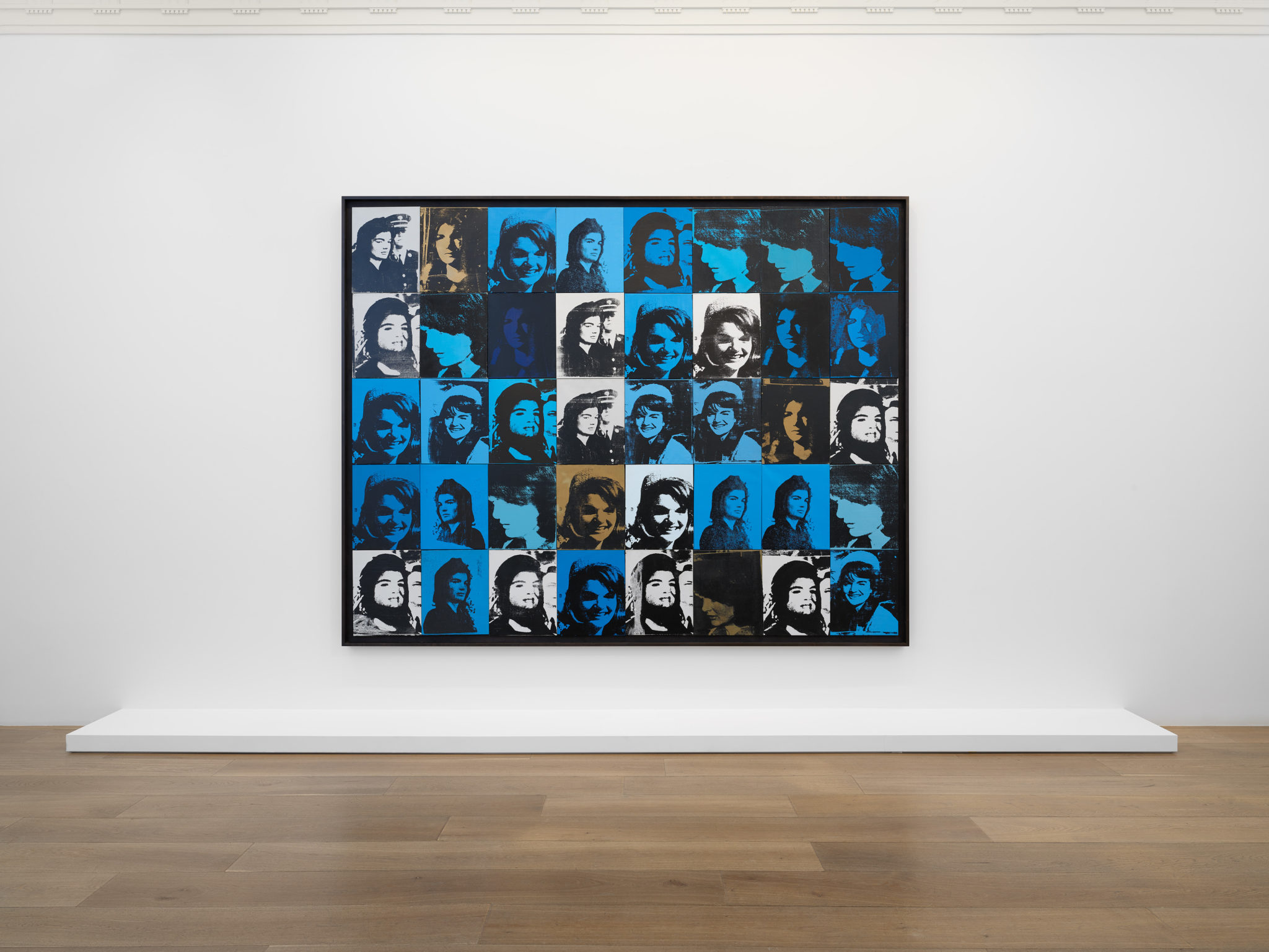Warhol Women | Forty Jackies
In the weeks following the November 1963 assassination of President John F. Kennedy, newspapers and magazines across the United States were filled with images of America’s First Lady—the now-widowed Jackie Kennedy. Andy Warhol began to collect these images, eventually selecting eight different photographic reproductions of Kennedy that he cropped, and had made into silkscreens in February of 1964. These would be used to create a series of works that made his subject, “the dramatic focus and emotional barometer of the Kennedy assassination.” [1]
As noted in the Warhol catalogue raisonné, the artist’s selection of images of Jackie was weighted toward repetition rather than narrative: two images showing the First Lady with President Kennedy as they arrived in Dallas were selected; two profile images of Jackie taken during the swearing in of Vice President Lyndon B. Johnson were used; and finally, four images of the grieving widow that were taken during her husband’s funeral were used—two showing Jackie veiled, and two unveiled. Each of the two screens was produced with all eight images, and one screen was the mirror image of the other, allowing Warhol to print each image in its original form as well as in reverse, creating the effect of seeing Jackie from multiple points of view, simultaneously, as if from, “a cinematic montage.” [2] Warhol used the screens to create multiple Jackie paintings, printing the same eight images in a limited range of colors, and variously presenting the printed canvases individually, or combining them to make a single work.
As early as 1971, the British art historian Richard Morphet saw in Warhol’s technique the foundation for the transformative quality Warhol’s artwork confers on his subject:
“At the same time one must emphasise the force with which Warhol imbues his imagery, for all its relative lack of openness to interpretation, by the simple acts of isolation, enlargement and choice of color. […] The image of Marilyn or Liz isolated on canvas becomes less pin-up than ikon.” [3]
Expanding on this idea, in a 2014 interview with art historian Alastair Sooke, the British art collector and dealer Anthony d’Offay noted the importance of Warhol’s upbringing, “’Remember that Andy was brought up an Eastern Orthodox Catholic in Pittsburgh where the veneration of icons of female saints was regular practice at weekly mass.’” For Sooke, this was also borne out by the prevalence of blue in Warhol’s Jackie imagery: “As well as being an elegiac colour, appropriate for mourning, blue is the colour of the Holy Virgin—and Jackie was like a contemporary, secular version of a saint, venerated by the masses.” [4]
In honor of our exhibition Warhol Women, we’re sharing some of the stories behind the artist’s iconic portraits. Visit the Happenings page each week to read more!

